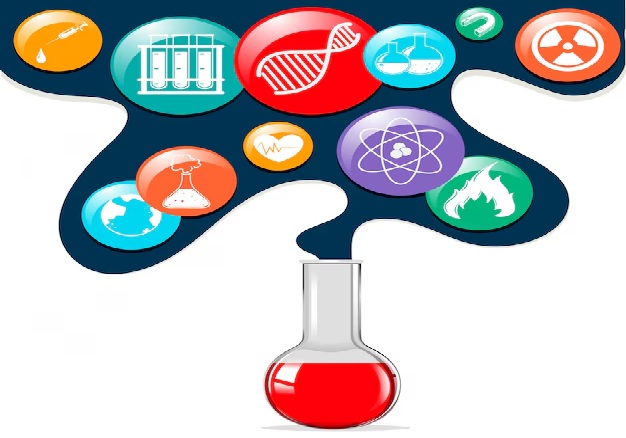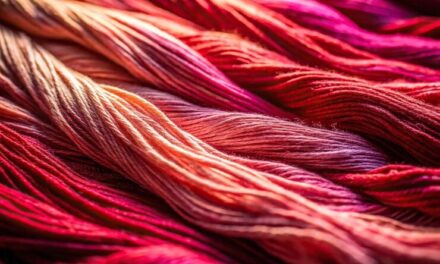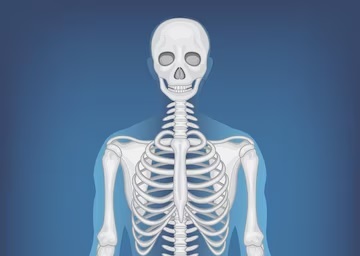Introduction
Our world is constantly changing. From the seasons shifting to a caterpillar transforming into a butterfly, change is an essential part of nature and our everyday lives. In science, we study these changes to understand how and why they happen. This knowledge helps us make sense of the world around us and even predict future changes.
Reversible and Irreversible Changes:
In science, we categorize changes as either reversible or irreversible based on whether we can return the changed substance to its original state.
- Reversible Changes:
A reversible change is one where the original substance can be recovered and the process can be undone. In these changes, no new substance is formed.
Key characteristics:
– The original substance can be recovered
– The chemical composition remains the same
– The process can be reversed
Examples of Reversible Changes:
- a) Melting and Freezing of Ice:
When you take ice out of the freezer, it melts into water. This is a reversible change because you can freeze the water again to get back the ice. The chemical composition (H2O) remains the same throughout.
- b) Dissolving Salt in Water:
If you add salt to water, it dissolves. However, you can recover the salt by evaporating the water. The salt and water don’t form a new substance; they just mix together.
- c) Stretching a Rubber Band:
When you stretch a rubber band, it changes shape. But when you release it, it returns to its original form (unless you stretch it too far!).
- d) Mixing Marbles of Different Colors:
If you mix red and blue marbles, you can easily separate them again. No new substance is formed in this physical change.
- e) Boiling Water:
When water boils, it turns into steam. This steam can be cooled and condensed back into liquid water.
- Irreversible Changes:
An irreversible change is one where the original substance cannot be recovered and a new substance with different properties is formed. These changes typically involve chemical reactions.
Key characteristics:
– The original substance cannot be recovered
– New substances are formed
– The chemical composition changes
Examples of Irreversible Changes:
- a) Burning of Paper:
When you burn a piece of paper, it turns into ash and smoke. You can’t turn the ash and smoke back into the original paper. New substances are formed in this chemical reaction.
- b) Cooking an Egg:
When you cook an egg, the proteins in the egg change structure. You can’t uncook an egg and return it to its raw state.
- c) Rusting of Iron:
When iron rusts, it combines with oxygen to form a new substance – iron oxide (rust). This process can’t be easily reversed.
- d) Mixing Baking Soda and Vinegar:
When you mix these, they react to form carbon dioxide gas and water. You can’t separate these back into baking soda and vinegar.
- e) Cutting Paper:
Once you cut a piece of paper, you can’t “uncut” it to get the original piece back. While no new substance is formed, the change in structure is irreversible.
- f) Baking a Cake:
The process of baking involves chemical reactions that transform the ingredients into a cake. You can’t unbake a cake to get the original ingredients back.
Understanding the Difference:
To help students understand the difference, you could set up simple experiments demonstrating both types of changes. For example:
- Reversible change experiment: Dissolve salt in water, then evaporate the water to recover the salt.
- Irreversible change experiment: Burn a small piece of paper (with proper safety precautions) to show how it can’t be returned to its original state.
Chapter: Physical and Chemical Changes
Introduction
In the world around us, things are constantly changing. Leaves change color, food cooks, ice melts, and metal rusts. All these changes can be classified into two main types: physical changes and chemical changes. In this chapter, we’ll explore what these changes are, how to identify them, and why they’re important in our daily lives.
- What are Physical Changes?
A physical change is a change that doesn’t create a new substance. In a physical change, the substance might look different, but its chemical composition remains the same.
Key Characteristics of Physical Changes:
– No new substance is formed
– The change can often be reversed
– The chemical composition stays the same
Examples of Physical Changes:
- Changes in State
– Ice melting into water
– Water boiling into steam
– Water vapor condensing into liquid water
- Changes in Shape or Size
– Cutting paper into smaller pieces
– Molding clay into different shapes
– Grinding coffee beans
- Mixing or Separating
– Dissolving sugar in water
– Mixing different colored marbles
– Separating a mixture of sand and water
Activity: Observing Physical Changes
Materials needed: Ice cubes, a clear glass, water
Steps:
- Place an ice cube in a clear glass.
- Observe what happens as the ice melts.
- After the ice has melted completely, place the glass in a freezer.
- Observe what happens after a few hours.
Questions to consider:
– What changes did you observe?
– Did any new substances form during this process?
– Could you reverse the changes you saw?
- What are Chemical Changes?
A chemical change, also known as a chemical reaction, is a change that results in the formation of one or more new substances with different properties.
Key Characteristics of Chemical Changes:
– New substance(s) are formed
– The change is usually difficult or impossible to reverse
– There’s often a change in color, temperature, or the production of gas or light
Examples of Chemical Changes:
- Combustion (Burning)
– Wood burning to form ash and smoke
– Candle burning, producing heat and light
- Rusting
– Iron reacting with oxygen and water to form rust
- Cooking
– Baking a cake
– Frying an egg
- Natural Processes
– Photosynthesis in plants
– Digestion of food in our bodies
- Chemical Reactions
– Mixing vinegar and baking soda
– Tarnishing of silver
Activity: Observing a Chemical Change
Materials needed: Vinegar, baking soda, a clear glass or jar
Steps:
- Pour about 1/4 cup of vinegar into the glass.
- Add a tablespoon of baking soda to the vinegar.
- Observe what happens immediately and over the next few minutes.
Questions to consider:
– What did you see, hear, or feel during this reaction?
– Do you think you could easily separate the vinegar and baking soda again?
– What evidence do you have that a chemical change occurred?
- Comparing Physical and Chemical Changes
To better understand the difference between physical and chemical changes, let’s compare some examples:
|
Physical Change |
Chemical Change |
|
Tearing paper |
Burning paper |
|
Melting chocolate |
Cooking an egg |
|
Cutting wood |
Wood rotting |
|
Dissolving salt in water |
Rusting of iron |
|
Boiling water |
Milk turning sour |
- Why Are These Changes Important?
Understanding physical and chemical changes is crucial because:
- It helps us make sense of the world around us.
- We can predict and control changes in cooking, manufacturing, and other processes.
- It’s the foundation for understanding more complex scientific concepts.
- It helps us understand how to properly handle and store different substances.
Conclusion
Physical and chemical changes are happening all around us, all the time. By understanding these concepts, we can better appreciate the dynamic nature of our world and how different substances interact. Remember, in a physical change, no new substance is formed, while in a chemical change, we end up with one or more new substances. Keep observing the world around you – you’ll be surprised at how many changes you can identify!
Changes When Different Substances are Mixed
When we mix different substances, exciting things can happen! Sometimes the substances simply blend together, while other times they react to form completely new substances. Understanding these changes is crucial in chemistry and helps us make sense of many everyday phenomena, from cooking to cleaning to industrial processes.
Types of Changes When Mixing Substances
When substances are mixed, two main types of changes can occur:
- Physical Changes
- Chemical Changes
Let’s explore each of these in detail.
- Physical Changes When Mixing
In a physical change, no new substance is formed. The substances mix but maintain their original chemical properties. These changes are often reversible.
Examples of physical changes when mixing:
- a) Dissolving sugar in water:
– When you stir sugar into water, the sugar seems to disappear, but it’s still there.
– The sugar molecules spread out between the water molecules.
– You can recover the sugar by evaporating the water.
- b) Mixing sand and water:
– The sand and water don’t combine chemically.
– The sand particles are suspended in the water.
– Given time, the sand will settle at the bottom due to gravity.
- c) Blending different colored playdoughs:
– The colors mix to form a new color, but no chemical reaction occurs.
– You can often still see streaks of the original colors.
- Chemical Changes When Mixing
In a chemical change, a new substance with different properties is formed. These changes are usually irreversible.
Examples of chemical changes when mixing:
- a) Mixing vinegar and baking soda:
– This produces a fizzy reaction, creating carbon dioxide gas.
– The resulting substance is different from both vinegar and baking soda.
- b) Mixing lemon juice and milk:
– The acid in the lemon juice causes the milk to curdle.
– This is the beginning of the process used to make cheese!
- c) Mixing iron filings and oxygen (with water):
– Over time, this mixture produces rust (iron oxide).
– The rust has very different properties from iron or oxygen.
Factors Affecting Changes When Mixing
Several factors can influence what happens when substances are mixed:
- Temperature: Higher temperatures often speed up reactions.
- Surface Area: Smaller particles react faster due to increased surface area.
- Concentration: More concentrated substances typically react more vigorously.
- Catalysts: Some substances can speed up reactions without being consumed.
Everyday Examples of Mixing Substances
- Cooking:
– Baking a cake involves both physical changes (mixing ingredients) and chemical changes (baking the batter).
- Cleaning:
– Mixing water and soap creates a solution that can trap and remove dirt.
- Making Slime:
– Mixing glue, borax, and water creates a fun, slimy substance through a chemical reaction.
- Rusting:
– When iron is exposed to oxygen and water, it slowly forms rust.
- Digestion:
– In our stomachs, food mixes with acid and enzymes, breaking it down through chemical changes.
Simple Experiment: Observing Changes When Mixing
Let’s do a simple experiment to observe both physical and chemical changes when mixing substances.
Materials needed:
– 4 clear glasses
– Water
– Salt
– Sugar
– Baking soda
– Vinegar
– Spoon for stirring
Steps:
- Fill each glass halfway with water.
- In the first glass, add a spoonful of salt and stir.
- In the second glass, add a spoonful of sugar and stir.
- In the third glass, add a spoonful of baking soda and stir.
- In the fourth glass, add a spoonful of baking soda, then pour in some vinegar.
Observations:
– What happened in each glass?
– Which mixtures resulted in physical changes?
– Which mixture(s) resulted in a chemical change?
– How could you tell the difference?
Conclusion
Understanding what happens when substances are mixed is crucial in many areas of science and everyday life. By observing these changes, we can predict outcomes, create useful products, and even avoid dangerous combinations. Remember, physical changes don’t create new substances, while chemical changes do. Keep exploring and mixing (safely, of course!) to discover the exciting world of chemical reactions all around us.
The worksheet covers the following topics-
Intro to what is a change and the different kinds of changes happen around us?
Why do changes occur? Changes have a cause and the cause changes- shapes, size, position, color, state, internal structure
explanation of Reversible and irreversible changes
explanation of Physical and chemical changes- expansion, physical changes, reactants, products, chemical changes ; with examples
Examples of physical and chemical changes-
Boiling, evaporation and condensation
Rusting,
Melting of a solid,
Burning of a candle, with some experiments

















